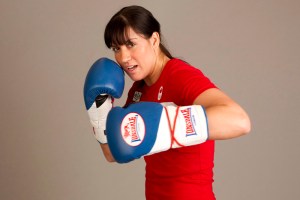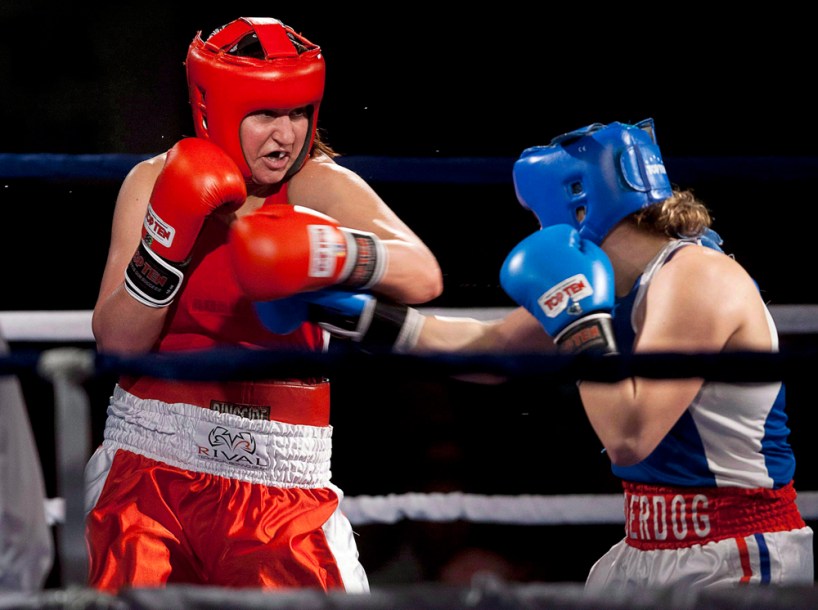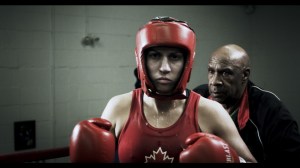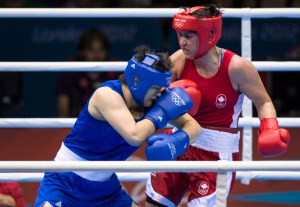Spencer Creating New Reality
“One day I will tell female boxers that guys competed in the Olympics and girls didn’t. They’re not going to believe me.”
That’s the world in which Olympic boxer Mary Spencer wants to live. And the 28-year old has made it possible by making herself vulnerable to her sport – risking relationships, her career and her passion all for the name of the game. Her game.
It’s a scary notion, but like any elite athlete, she is no stranger to fear.
“Every single time that I step into the ring I feel fear,” said Spencer, a three-time world champion. “I always feel nervous, the morning of the fight. I wake up and feel that fear right away. I can tell you that every time I have competed I have felt those nerves.”
But to change the world, you have to face your fears. And Spencer’s ability to “deal with it” has opened doors for her, sure, but more importantly, for a nation looking to sport to make a difference.
Spencer’s life and that of every other female boxer changed in August of 2009 when the International Olympic Committee approved the inclusion of women’s boxing into the Olympic program for London 2012.
The IOC’s ruling gave Spencer a new lease on her career with the Olympic stage to aim for. A proud Ojibway athlete originally from Cape Croker, ON, Spencer would be given the opportunity to become a trailblazer in a male dominated sport.
Along the way to her eventual naming to the Canadian Olympic Team, Spencer had to learn the hard way about everything that comes with new stardom. Leaving her mark on history would be an incredible challenge.
A disappointing fifth place finish in London would be the product of several factors according to the Windsor native.
Looking back at her journey, Spencer says she has learned that the Olympic experience has to be for her and for no one else — regardless of the pressures associated with representing one’s country on the world stage.
“I know that it (the Olympic Games) affects my family, my club, my coaches, my community and people that look up to me,” said Spencer. “It has to be something I don’t think about constantly like I did in 2012. I really have to look at it as my dreams and I’m going to go get them.”
As chronicled in the documentary “Last Woman Standing” released this past weekend, Spencer had the goods and the résumé to stand at the top of the podium.
Her story began at the Windsor Amateur Boxing Club under the tutelage of coach Charlie Stewart. A good athlete who excelled at basketball and showed some aggression, Stewart brought Spencer into the gym and decided to see what she was made of in the ring.
“Mary’s not a person that quits,” said Stewart. “That’s how she got to where she is.”
Spencer would eventually turn into a senior national athlete in 2004 and captured nine consecutive Canadian Championship titles and three World Championships over the course of her career.
The inclusion of boxing into the 2012 Summer Games was a great step toward gender equality, but it left a lot of fighters contemplating what to do next.
Only three weight classes were created for London – a far cry from the 10 in which the men competed. Originally a 66kg fighter, Spencer’s career would make a shift when the IOC did not include her division in the Olympic Games.
With a limited number of divisions, fighters like Spencer would have to make crucial decisions about adding and dropping weight.
To realize her dreams, Spencer would have to move up to 75kg to face good friend and Saint-Nicolas, QC, native Ariane Fortin for the only quota spot available to Canada. Spencer’s inner turmoil about facing Fortin, a two-time world champ herself, is chronicled in “Last Women Standing.”
The movie, by filmmakers Juliet Lammers and Lorraine Price in their debut feature, serves as a reminder of the obstacles athletes face each day to be the best at what they do. They follow the sacrifices these boxers have to make to accommodate relentless training and their struggle to set their bond and friendship aside to qualify for London.
“We were interested in women’s boxing being in the Olympics for the first time,” said Lammers. “But we knew there would only three weight classes and Canada has two world champions in the same division. The movie was a way to address the state of women’s boxing.”
Now, the state of women’s boxing is in a brave new world.
There are early rumblings the IOC will expand weight divisions for RIO 2016. If this happens, it will allow more fighters the opportunity to compete and represent their countries without having to face the massive decision of re-inventing their bodies to make weight.
“I think a lot of really good boxers were left out of the Olympics,” said Spencer. “I think the International Boxing Association realizes that.”
Movies such as “Last Woman Standing” (and the inclusion of Canada’s two best boxers in it) will help promote and expand the sport according to Spencer.

“One day I will tell female boxers that guys competed in the Olympics and girls didn’t. They’re not going to believe me.” - Mary Spencer. Photo: The Canadian Press
“It’s a great way to see women’s boxing,” said Spencer. “I never really had a chance to watch other females boxing and think that’s what I wanted to do. I feel like there would be so many other girls that would love it if the opportunity was there. Stuff like the movie gets the word out there.”
Get word out, sure, but thanks to the likes of Spencer, Fortin and a film that has captured an important moment in sports history, Canada has a new landscape and a new purpose in women’s boxing.
Spencer and Fortin have committed to a complete Olympic cycle of training in preparation for the Rio Summer Games.
Behind them will be a new generation of female boxers.
– George Fadel
Related Videos






